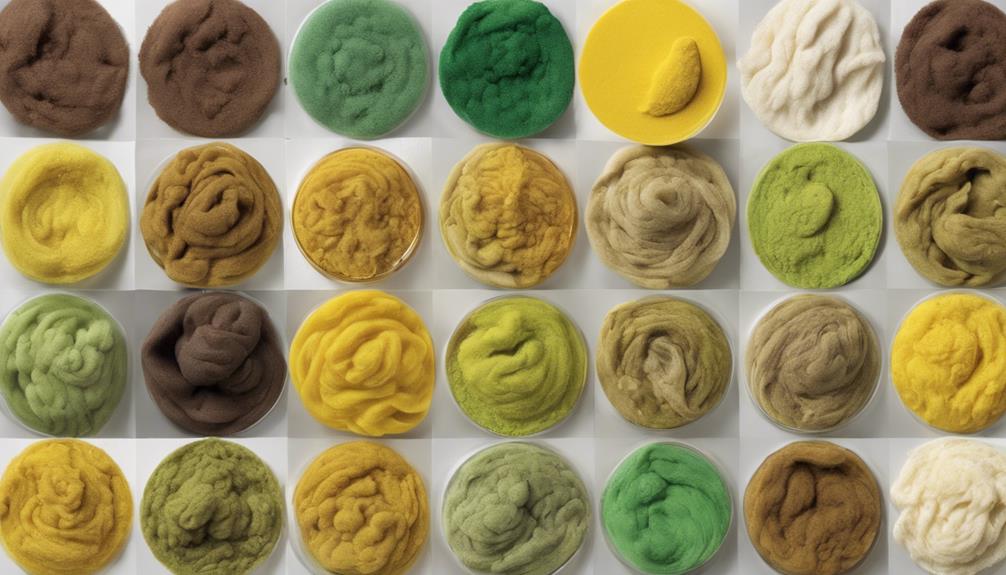As we dip our toes into the murky waters of formula-fed newborn poop, exploring the vast expanse of colors, textures, and frequencies can be a challenging task for any parent. Understanding the nuances of what's normal and when to raise a flag is important for your baby's well-being.
But what happens when the color isn't quite what you expected, or the consistency raises an eyebrow? Stay tuned for insights that will arm you with the knowledge to decode your little one's poop mysteries and guarantee their health is on the right track.
Key Takeaways
- Formula-fed newborn poop is typically tan, thick, and resembles hummus.
- Monitoring colors and textures helps assess digestive health.
- Changes in poop frequency are normal among formula-fed infants.
- Consulting a pediatrician for unusual colors or consistency is crucial.
Normal Characteristics of Formula-Fed Newborn Poop
When observing the normal characteristics of formula-fed newborn poop, we typically expect to see a tan, thick consistency that may resemble hummus. In the first few days after birth, babies pass meconium, a greenish-black, sticky stool. As the baby shifts, usually by 2-4 days old, their stool changes to various shades of brownish, tan, yellow, or green. Formula-fed infants tend to produce larger, firmer, and smellier stools compared to breastfed babies. The texture of formula-fed baby poop is often described as peanut butter-like, making it easier to clean up during diaper changes.
Understanding the typical color and consistency of formula-fed newborn poop is essential for parents as changes in these characteristics could signal underlying health issues. Monitoring your baby's stool regularly and being aware of deviations from the expected brownish, tan, yellow, or green hues can help in early detection of any problems that may arise. Remember, each baby is unique, so variations in stool color and texture can be normal.
Frequency of Formula-Fed Baby Poop
Formula-fed newborns typically pass stools once or twice a day, potentially following each feeding. It's common for babies between 1-2 months to have daily bowel movements, sometimes skipping a day.
As solid foods are introduced around 4-6 months, formula-fed babies may experience an increase to around two bowel movements per day. It's important to note that poop frequency can vary among formula-fed infants, and deviations from these patterns are normal.
If you notice any signs of diarrhea or constipation in your baby's stool, it's advisable to consult a pediatrician for guidance. Monitoring the regularity of bowel movements in newborns plays a critical role in determining their digestive health.
Keeping track of your formula-fed baby's poop frequency and discussing any concerns with a healthcare provider can help assure their well-being.
Colors of Formula-Fed Baby Poop
Shifting from discussing the frequency of formula-fed baby poop, the colors of formula-fed newborn poop provide valuable insight into the baby's digestive health and well-being. When observing the color of formula-fed baby poop, it's essential to note the following:
- Dark yellow, green, brown, tan, or yellow-tan are typical colors of formula-fed baby poop.
- Dark brown, dark green, or black poop in formula-fed babies may be due to iron supplements or fortified formula.
- Unusual colors like mucus, white, red, black, or frothy green stools may indicate underlying health issues in formula-fed babies.
Monitoring the colors of formula-fed baby poop is important as it can help caregivers and healthcare providers assess the baby's digestive health. Healthy formula-fed baby poop is often described as peanut butter-like in consistency. Any deviations from the normal color spectrum should be discussed promptly with a healthcare provider to rule out any underlying health concerns.
Texture and Consistency of Formula-Fed Baby Poop

In evaluating the texture and consistency of formula-fed baby poop, caregivers should note its peanut butter-like firmness, smooth paste-like quality, and well-formed appearance. Formula-fed newborn poop tends to have a denser consistency compared to breastfed infants, reflecting the differences in their diets. This characteristic texture is a result of the composition of formula milk and how the baby's digestive system processes it.
The well-formed nature of formula-fed baby poop indicates that the digestive process is functioning effectively, leading to proper nutrient absorption. Any deviations in the texture, such as watery or hard stools, can signal the need for dietary adjustments or potential health issues. Monitoring the consistency of formula-fed baby poop is important for evaluating digestive health and ensuring the newborn's overall well-being.
Caregivers should observe these characteristics closely to detect any changes that may require attention from healthcare providers.
Signs to Watch for in Formula-Fed Baby Poop
As we observe the texture and consistency of formula-fed baby poop, it's important to be vigilant for specific signs that may indicate potential health concerns. When examining your baby's diaper, here are some key signs to watch for:
- Unusual Colors: Normal formula-fed baby poop colors range from dark yellow to brown, tan, yellow-tan, and even green. However, colors like mucus, white, red, black, or frothy green stools should raise concerns and prompt consultation with a doctor.
- Presence of Mucus: Mucus in stool that resembles slimy, shiny strings can be an indicator of an underlying health issue in formula-fed babies and shouldn't be ignored.
- Red or Black Stools: Red poop (unrelated to red foods like beets) or black stool without a known cause, such as iron supplements, require medical attention. It's important to discuss these color changes with a healthcare provider for further evaluation.
Frequently Asked Questions
When Should I Be Concerned About Formula Fed Babies Poop?
If your formula-fed baby's poop appears hard, chalky, unusually colored, or watery, contacting a healthcare provider is essential. Red streaks or persistent issues like discomfort and odor should also prompt a discussion to guarantee your baby's health.
How Do You Know if a Formula Fed Baby Has Diarrhea or Normal Poop?
We assess formula-fed babies for diarrhea by examining stool frequency, texture, and color. Watery or excessively loose stools could indicate diarrhea. If concerned, consult a healthcare provider for proper evaluation and guidance on managing your baby's condition.
What Is the Change in Formula Baby Poop?
We notice changes in formula baby poop color, consistency, and odor. These variations can signal digestive issues or formula intolerance. Monitoring these alterations is essential for early detection of health concerns. Regular observation aids in maintaining baby's well-being.
What Does Milk Allergy Poop Look Like?
We noticed our baby's poop being green, frothy, and mucus-filled, with occasional blood streaks. It smelled foul and occurred frequently. After consulting our healthcare provider, we learned these signs indicated a milk allergy, prompting potential formula adjustments and allergy testing.
Conclusion
To sum up, monitoring your formula-fed newborn's poop can provide valuable insights into their digestive health. By observing the frequency, color, texture, and consistency of their poop, parents can identify any potential issues early on.
Remember, a healthy baby poop is a good indicator of overall well-being. Stay vigilant and consult a doctor if you notice any concerning changes in your baby's poop. Your attention to detail can help guarantee your baby's health and happiness.










